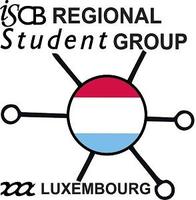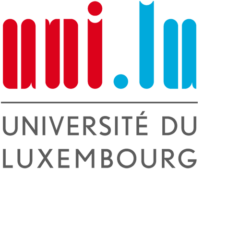Date/Time
Date(s) - 27/03/2025
5:30 pm - 7:00 pm
Location
BT2 Detente / Kitchenette 1st Floor Room 101
Categories
Do you like scientific discussion? And how about Pizza?
If we gained your attention with ‘scientific’, or at least with ‘Pizza’, then you are already looking forward to the right event!
Pizza Club is a regularly held Journal Club event co-organized by The Representatives of the Doctoral Programme in Systems and Molecular Biomedicine, part of the Doctoral School in Science and Engineering (DSSE); and the Uni.lu student association ISCB RSG Luxembourg.
In short, Students (PhD candidates) present a scientific paper (+- 20 mins) they find interesting or that inspired the development of their individual PhD project (doesn’t need to be authored by the speaker).
There will be a open discussion round after each scientific presentation (2-3 students per event), followed by informal and fun chatting with some pizzas around!
Moreover, each presentation of peer-reviewed papers will be rewarded by 0.5 ECTS!
If we attracted your interest by now, feel free to join the monthly Pizza Club, either as part of Audience or as a registered Speaker. For the latter, please kindly use this form to sign up as an upcoming Speaker, by choosing your category of paper and desired month to present. Looking forward to seeing you at the next Pizza Club!
Information about the March 27 meeting:
Rafael Barros:
Introduction: My name is Rafael De Castro Barros, I am 26 years old and I am Luxembourgish. I did my secondary school here in Luxembourg and then moved to do my superior studies in Brussels, Belgium and later to Maastricht, The Netherlands, where I did my Bachelor’s and Master’s degree respectively in Biomedical Sciences. Now I am doing my PhD within the Tumor Stroma Interactions group at the Department of Cancer Research at LIH, focusing on the altered cellular communication between immune cells and within the tumor microenvironment in CLL.
The Research Paper presented: “Extracellular vesicles from chronic lymphocytic leukemia cells promote leukemia aggressiveness by inducing the differentiation of monocytes into nurse‐like cells via an RNA‐dependent mechanism” (https://onlinelibrary.wiley.com/doi/10.1002/hem3.70068)
Abstract: The study explores how extracellular vesicles (EVs) help chronic lymphocytic leukemia (CLL) cells interact with their surroundings in the tumor microenvironment. Furthermore, the study shows that when CLL cells are stimulated through their B-cell receptors, they release EVs with specific small RNAs, such as miR-155-5p and miR-146a-5p. These EVs are taken up by monocytes, which then change their behavior and support CLL cells by helping them survive and move more easily. Lastly, the study highlights how these interactions create a protective environment for CLL cells and suggests new targets for treatment
Astrid Vincze:
Introduction: I am a bioinformatician in my first year of a PhD in the Doctoral Programme in Systems and Molecular Biomedicine. My current research focuses on the environmental microbiome, but I previously worked on variant analysis. I’ve always been fascinated by how genomic variations influence complex traits and their broader implications. For this presentation, I’ll be sharing a GWAS study conducted on an Icelandic population to explore sequence variants affecting voice pitch in humans.
The Research Paper presented: “Sequence variants affecting voice pitch in humans” (https://www.science.org/doi/10.1126/sciadv.abq2969)
Abstract: This study investigates the genetic basis of human voice pitch by analyzing speech recordings from over 12,000 Icelanders alongside their genomic data. Using a genome-wide association study (GWAS), researchers identified a genetic variant in the ABCC9 gene linked to voice pitch—a finding later confirmed by follow-up studies across diverse populations, strengthening its association with adrenal function and vocal fold mechanics. The research also explores the heritability of voice traits and their connections to physical and cognitive features, offering an exciting glimpse into the biology behind one of humanity’s most unique characteristics.

